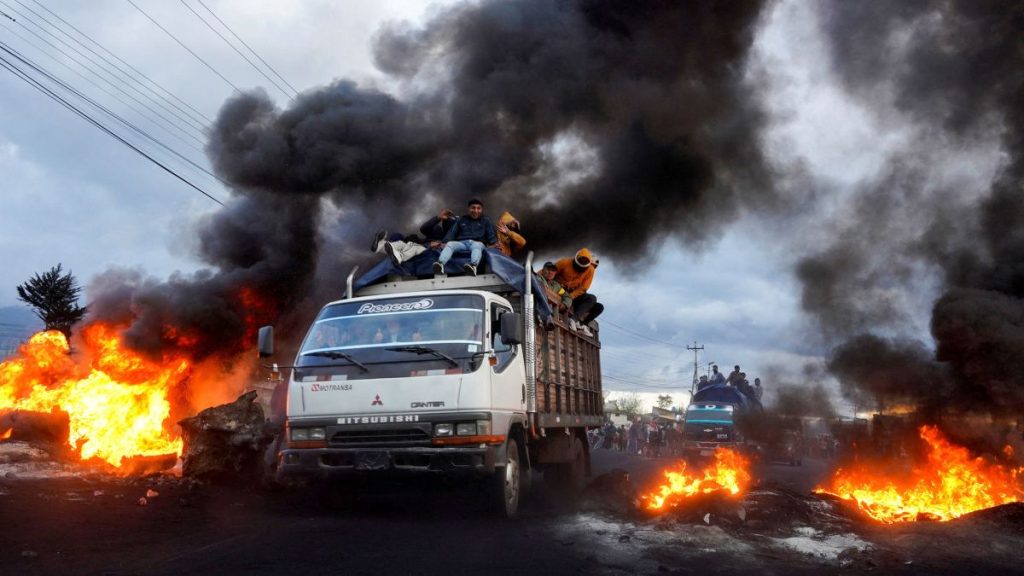Rise in gasoline prices threatens social stability and food security in Latin America

Rising fuel prices have already brought about protests in Argentina, Ecuador and Panama. Their neighbors could be particularly susceptible to rising prices at the pump, because the region lacks alternative means of transportation, such as railways and waterways that are more common in Europe and North America — and guzzle less fuel.”The price of fuel is an anchor for the entire economy: if fuel increases, it has a direct impact on all sorts of prices,” says Sergio Guzman, director of Colombia’s Risk Analysis, a business consultancy in Bogota. Exacerbating the issue, some sectors in the region are requiring greater amounts of fuel than ever before — paradoxically, to compensate for the effects of climate change.In Ecuador, where bananas are the leading agricultural export, diesel pumps move water in and out of banana plantations — a necessity that has been more urgent as increasingly intense rainfalls hit the country, say analysts. According to Raul Villacres of Pulso Bananero, a banana-trade consultancy in Guayaquil, Ecuador’s banana production is down 7% compared to last year, in part due to rising costs of diesel and gasoline. A similar situation is affecting the fishing industry in Colombia, where residents enjoy some of the cheapest fuel prices in the world. Still, when the Energy and Mining Ministry published new regulated prices at the beginning of July, it sent shockwaves across the country. Twice a week, fisherman Jimmy Murillo leaves shore from the port city of Buenaventura, on Colombia’s Pacific coast. He spends on average two or three days at sea before coming back with his catch, but lately the trips have grown longer, as fish stocks have reduced and the fishermen head further offshore to find better prey. Ironically, one of the reasons why fishing catches have decreased is climate change, and fishermen like Murillo must use more fuel to mitigate its impact. One of the reasons, Murillo told CNN, is that as rainfalls patterns change and more torrential rains hit the Colombia, rivers and streams arrive at the ocean carrying more sand and soil in their waters, and because of that most of the fish migrate further off shore, where the water is clearer, and cooler.”In January, fuel for our boats cost 8,000 pesos ($1.96) per gallons, now it’s over 9,800 pesos ($2.70). Every week, it grows a little more, and the government does not help,” Murillo told CNN.Nicole Muñoz of Albacora, a small-scale, sustainable fishing operation in Bogota that moves around 400 kilograms of fish from the Colombian coast to the capital every week, also says gasoline is key to her entire business model. “We use fuel for fishing boats, to move the produce from shore to airports, then in planes, our whole logistics depend on it,” Muñoz told CNN. While fish prices have not increased as much as other food sectors in Colombia, like beef and poultry products, Muñoz believes prices will start growing as the impact of pricier fuel is felt. In April, the World Bank reviewed its growth prediction for Latin America and the Caribbean to 2.3% this year, shredding 0.4 percentage points due to the impact of the war in Ukraine and the global rise in world’s prices. At the same time, the Bank estimated Latin American countries have lost the equivalent of 1.7% of their GDP due to climate related disaster over the last twenty years, and expects Latin America’s agriculture to be on the line of fire as the planet grows warmer.As daily life grows more expensive, could the popular anger seen in Panama, Ecuador and Argentina spread to Colombia and other countries in the region? “It’s really not a question of if, but of when,” says Guzman of Colombia’s Risk Analysis.He argues that regional governments won’t be able to spend enough to mitigate the rising cost of living and pacify their populations. “As pockets tightens, people will be losing their patience, not because of anything the governments do, but because these countries don’t have the capacity to increase social spending.”Ecuador’s President Guillermo Lasso, for example, has been forced by protests to cap the price of gasoline at $2.40 per gallon — a decision that will cost the country an additional three billion dollars by the end of the year, according to finance minister Simon Cueva.In Argentina, where the country’s finance minister has been forced to step down over extreme inflation, one Buenos Aires food delivery worker told CNN the year had so far proven more rancorous than the early years of the pandemic.”Everybody complains,” Federico Mansilia, a father of two, told CNN. “Those who get social support because they say it’s not enough, and those who don’t get it because they want social support. At least in the pandemic, government and opposition worked together, now polarization and bitterness is growing again.”The sole hope for a moment of national unity, Mansilia says, is for Argentina to win the Football World Cup in Qatar at the end of the year.”That will really bring the country together. If we win, everybody will be happy, no inflation or gasoline price to bother us. But right now, things are pretty miserable.”






